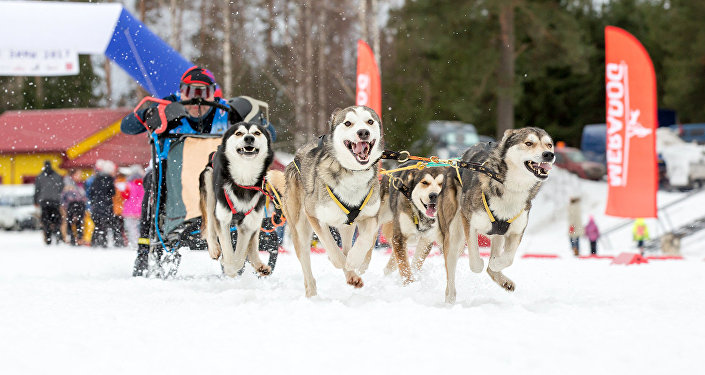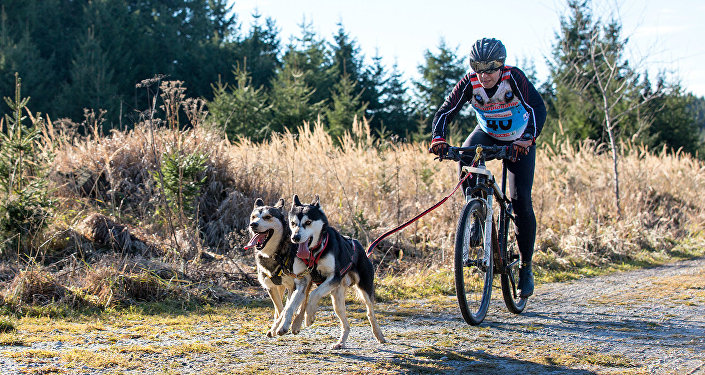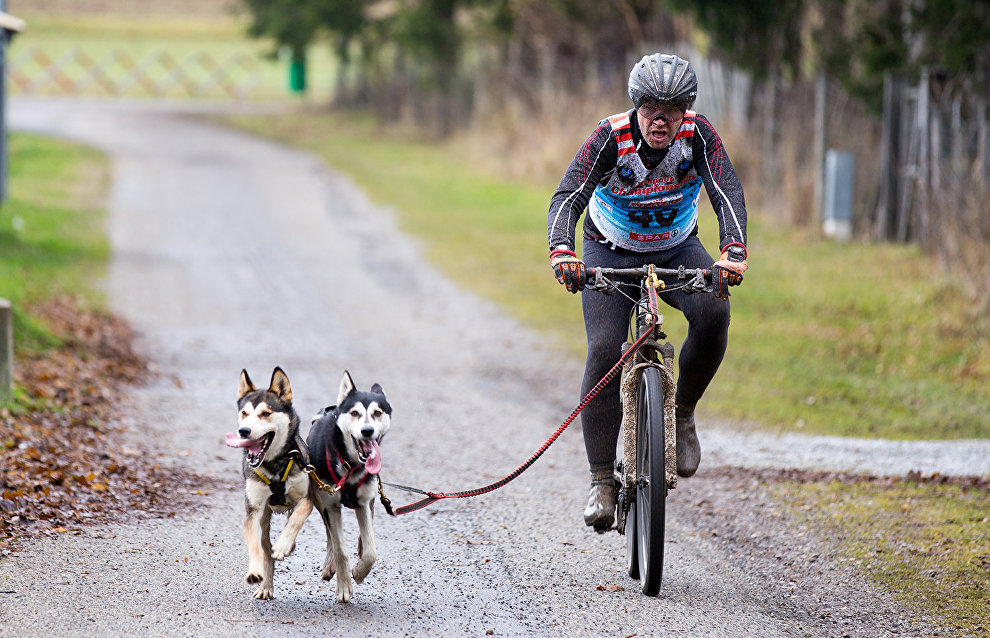Oleg Tarazanov: The most important thing is for the dog to understand what you want
Oleg, how long have you been driving sled dogs?
I have been in this sport since 2003 when I started driving Arctic sled dogs with my son. I am a European bikejoring champion with Arctic sled dogs.
Today, my son knows more about dogs than I do. He won bronze in the 2017 Russian winter sled dog championships and also won the European cup (scooter).
How did you get into this sport?
As with most people, it all began after we bought an Arctic sled dog. You see, these dogs are absolutely beautiful. Then I started reading more about the breed, I started jogging with the dog in a park, and later I started taking part in local competitions. I began buying specialized equipment to get the best results. This was followed by regular training sessions. I started buying new, more athletic dogs, and now I have seven of them.
Could you say a few words about Arctic sled dog breeds?
This category covers several dog breeds, including the Siberian Husky, the Alaskan Malamute, the Samoyed and the Greenland Sled Dog. Add to this our national dog breeds, including the Chukotka Sled Dog, the Yakutian Laika and the Kamchatka Sled Dog. All these Arctic sled dog breeds are quite rare.

© Alexei Vlasov
There are winter and summer events, held in snow-covered and snowless regions, respectively. Winter events involve sleds with two, four, six or eight dogs. There is also skijoring (skiing) with dogs.
Summer events motivate the dogs to stay in peak form all year round and utilize special three-wheel and four-wheel carts with four, six or eight dogs. Individual dryland events include the scooter race involving push-cycles with large wheels pulled by one or two dogs. Then there is bikejoring, which involves a cyclist pulled by one or two dogs. And there is also the Canine Cross, when a runner is tethered to a dog and runs through rugged terrain.
My son and I mostly take part in individual events, including the scooter event and bikejoring. Sometimes we drive four-dog carts, as well as sleds with two or four dogs in winter.
Do men and women compete with one another?
There are separate individual events for men and women, as well as combined dog sled races.
This sport was part of Arctic ethnic groups' everyday life. Do their members take part in these competitions today?
Yes, indigenous ethnic groups conceived of this sport, which is quite popular in Chukotka and Kamchatka. There are short-range dog-sprinting races over five-kilometer and ten-kilometer distances. There are also medium-range 50-kilometer races and long-range 500-1,000-kilometer events. Kamchatka hosts dog-sprinting races and multi-day races, including the Beringia race. And Chukotka hosts the Nadezhda (Hope) multi-day race for indigenous ethnic groups. In Central Russia, this sport is popular not only in Moscow and St. Petersburg, but in some other regions as well. But it's mostly widespread in big cities. Of course, there are no Arctic ethnic groups here, so mostly short-range dog-sprinting events are held.
The thing is, these are expensive races, and you have to bring your dogs and equipment with you. Naturally, not everyone is able to travel to these races.
Who is competing at the top at international competitions in the past few years?
Norway, the Czech Republic and Slovakia boast strong teams. There are many good athletes in the United States. Due to logistical problems, it is very hard to bring together people from various continents. Therefore competitions in the United States mostly involve Americans and Canadians. European competitions mostly involve Europeans, as well as occasionally some US athletes. This sport has not caught on in Africa and South America. It is quite popular in Australia, with local athletes competing within the country, because of the vast distances.

© Alexei Vlasov
Does there need to be a personal bond between the dogs and their owners? Or can you take another person's dogs and go?
Many athletes use other people's dogs. On the other hand, the dogs should know their owner well. Those wishing to merely participate can use anyone's dogs. But those who know their dogs' temperaments, strengths and weaknesses are likely to win split-second races.
What commands are used to steer the sled?
There are several main dog obedience commands, including "Forwards," "Stop," "Slow down," "Left" and "Right." Dog drivers sometimes use additional commands because there are many different situations. They use separate commands for bypassing obstacles to the right or to the left. Dogs can be told to run past something if they become distracted, if they look at other dogs, birds or rabbits, for example. Or they can be told to dash forwards. Some dog drivers tell the dogs to untangle themselves after they become entangled in the harness, but these are additional commands.
Do dogs understand other words?
Most importantly, the dogs should obey certain commands. Many people use the words "Pra" and "Le" instead of the Russian words "Pravo" ("Right") and "Levo" ("Left.") Some use the English words "Right" and "Left." Arctic natives use the words "Ji" and "Ho." Any word will do, but the most important thing is for the dog to understand what you want.
